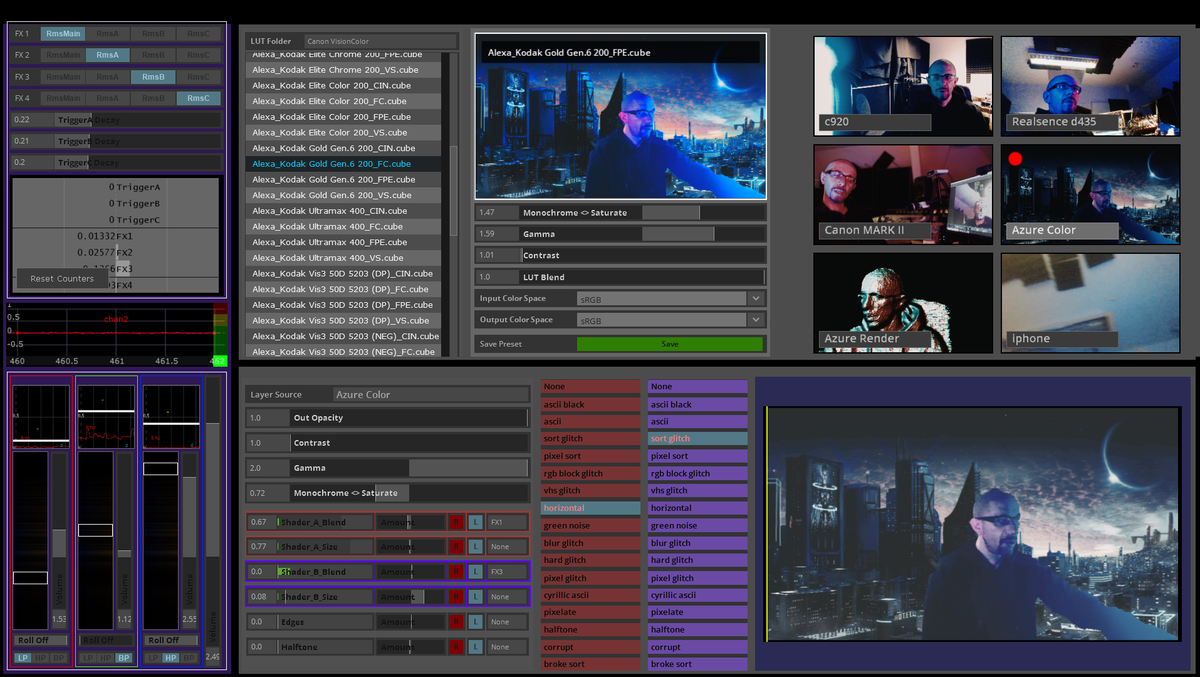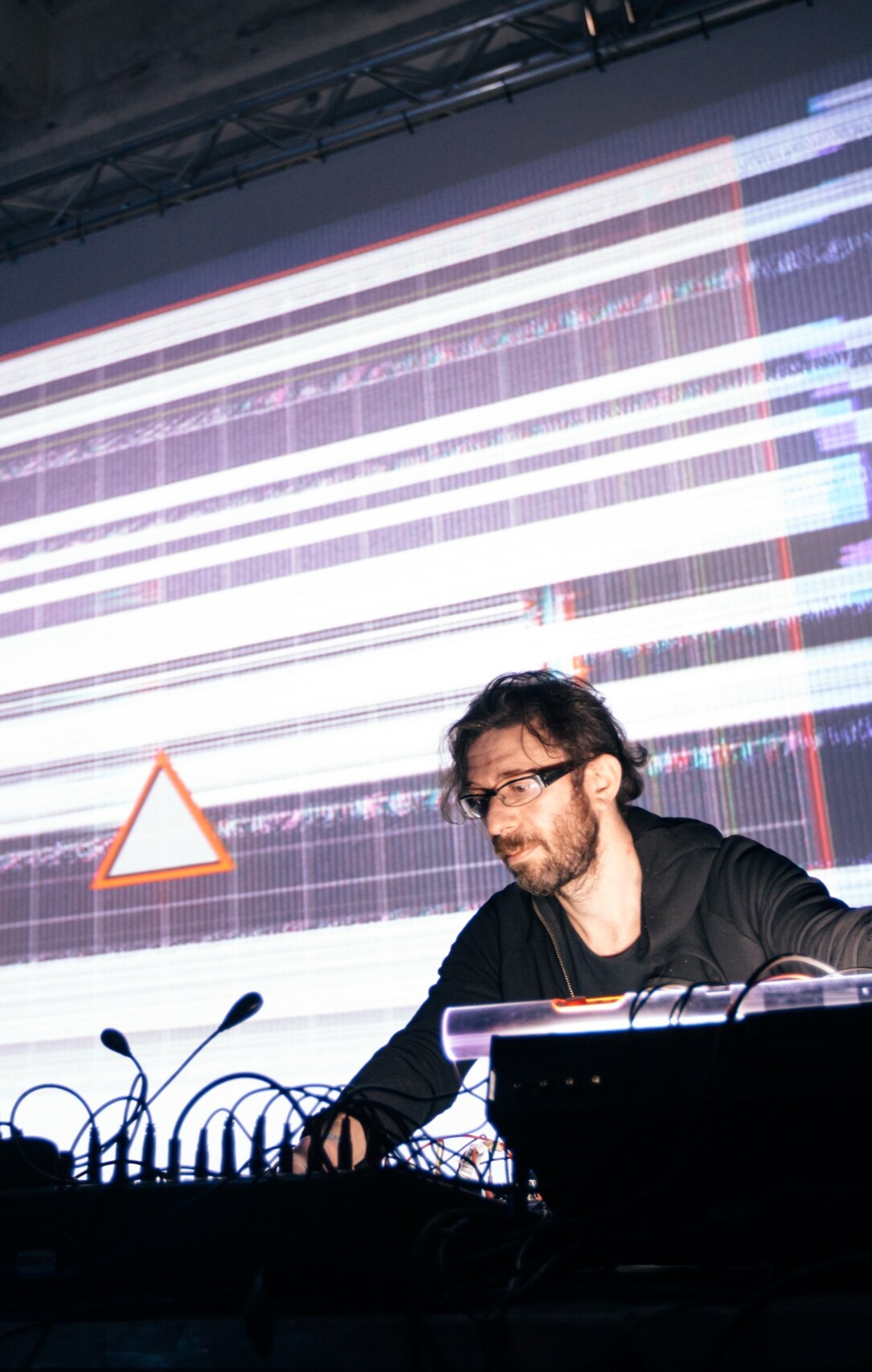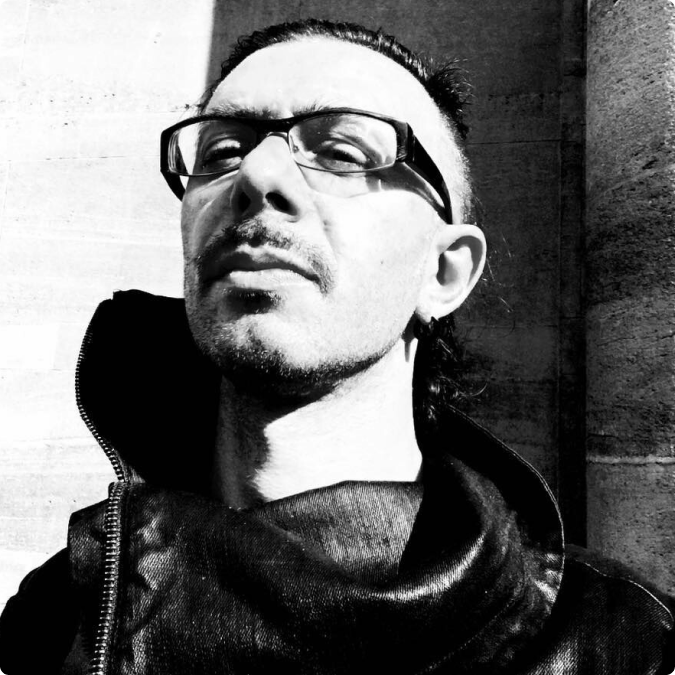Real Lights Preproduction Course is available for enroll
Enrollment is open
online self-study & curatorial support
hou2touch
This course was created after years of working at the edge of real-time graphics and motion systems.
Whether you're new to TouchDesigner or already have some experience — we’ll guide you from fundamentals to advanced workflows in real-time 3D.
You’ll build your skills step by step, understand core concepts like SOPs and GLSL, and learn to create complex, dynamic visuals with confidence.
Who is this course for?
You’re a VJ, 3D artist or motion designer ready to level up your visual skills.
You’re new to TouchDesigner and want to build great projects step by step.
You’ve tried tutorials but need structure, feedback, and expert guidance.
You want to learn workflows and thinking — not just click buttons blindly.
What you'll create
- Real-time generative 3D animations
- Interactive AV installations
- Procedural video content for shows and performances
- Your own mini media server logic and tools
- Integration projects with Unreal, Ableton, Bitwig
Tired of messy projects and random experiments?
We’ll help you build reusable setups, clean logic, and scalable pipelines — so your work doesn’t fall apart, and you can grow as a true visual systems designer.
Tools come and go. Workflow stays.
course format
114 hours of pre-recorded video content
Projects for TouchDesigner, Houdini, Unreal, Ableton, Bitwig
Duration: 28 weeks (10 hrs/week)
Feedback and support in chat with curators
For communication, during the course, we have a chat with a tutor, course curators, and other participants.
Academic approach to education
Start with the core ideas — not just effects.
The course is built around fundamental concepts from classical art and design education, adapted to the logic of procedural software.
Instead of jumping between random tutorials, you follow a clear learning path that helps you deeply understand how TouchDesigner and Houdini actually work.
Learn by doing. From day one.
Each module challenges you to build working setups, explore creative ideas, and solve real problems — not just follow along.
By the end, you won’t just know how to repeat — you’ll know how to invent.
Multiple software in one course
Both Houdini and Touch Designer works in a bound together with other software such as Unreal Engine. We believe that this wide approach which contains different programmes help our students to have more sophisticated instruments to work with for creating both real-time and non-real-time graphics and art.
Think in systems. Work like a professional.
You’ll learn how to build clean, scalable pipelines — and how to think procedurally, so you can reuse, adapt, and grow your work.
The course trains your mindset as much as your skillset — so you can build visuals that live, evolve, and impress.
Format
Self-study
Duration
114 hours of pre-recorded video content
Your skill level
Beginner, intermediate
Software
Houdini 20 TouchDesiner 2023 Unreal 5
Commitment
10 hours weekly
Who needs this
Motion Designers Media artists 3D Artists VR / XR Producers NFT Artists Interactive Developers Musicians VJs Video Engineers




Author of the course:
Stanislav Glazov
20+ years in media art & education
Audiovisual artist, educator, and technical director with over 20 years of experience in media art and creative coding.
Expert in TouchDesigner, Houdini, GLSL, and real-time pipelines
Built automated systems for TV, AV shows, and generative installations.
On this course, Stanislav shares not only tools and techniques — but the way he thinks, builds, and solves creative tasks in complex, real-time environments.
Performances at all the iconic festivals of the planet: Berlin Atonal, Mutek Montreal, Ars, Electronica Linz, Unsound Festival in Krakow, Raster-Noton night in Berghain, Barbican London, Resonance Festival in Tokyo, Mira Festival Barcelona, L.E.V. Festival, Light Festival Lyon
syllabus
At the beginning of the classes, you will receive a link to detailed information about the schedule and timetable, or you can download it below.
what YOU WILL learn
DEEP UNDERSTANDING OF DATAFLOW AND PROCEDURAL
CONCEPT OF HOUDINI/TOUCHDESIGNER
PROCEDURAL MODELING AND ANIMATION
BASICS OF PYTHON/GLSL PROGRAMMING
WORKFLOW OF THE PHOTOREALISTIC RENDERING
GENERATIVE ABSTRACT TEXTURES
PROCEDURAL 3D MODELLING AND ANIMATIONS
PERFORMANCE UI AND LOGIC OF THE MEDIA SERVER
DATA-DRIVEN MOTION DESIGN SYSTEMS
INTERACTIVE APPLICATIONS A - V SHOWS
Testimonials
VJ Dzhezus
Media artist, VJ
Setup Design
Moscow, Russia
Stanislav Glazov's courses are the best thing that happened in my life. So if suddenly someone is still in thought - here's a sign for you.
Ahmet Said Kaplan
We had very effective workshop with Stanislav around 10 years ago, I can honestly say that, Stanislav opens my eyes and show me numberless potantials of creating real-time and interactive visuals.
Now, as our studio DECOL grows, he was always been supporter and collabrator with us. We were also lucky enough to catch his new workshop series 'Hou2Touch' and our upcoming talents fall in love with the softwares with the help of Stanislav.
Ildar Iakubov
I was lucky to meet Stanislav in the very beginning of my career, about 12 years ago. His courses made a great effect on my learning progress and built a strong foundation for further development. We are good friends since then and he is still a unique source of knowledge, thanks to his broad experience.
Phelan Kane
The courses were detailed and provided some excellent examples and techniques that are difficult to find. examples of elsewhere
You are definitely a world leading expert in TD.
Best TD course's I've ever found.
Piotr Wojtczak
Depth of knowledge, nice and practical examples
Vadim Bioman
Deep in researching and excellent approaches from point of view of proceduralism
Jacopo William de Denaro
I truly appreciate what I am learning, it is an edgy topic and it is a pleasure to learn it from a master, not an easy thing to find In standard education.
There is a very high skill level of knowledge.
2000€
FAQ FAQ
FAQ
FAQ
Got any questions left? We are happy to help! } } } } } } } } }
hou2touch 2025 (c)
go up ^ License Agreement go up ^ License Agreement RU Privacy Policy